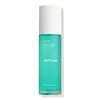What's inside
What's inside
 Key Ingredients
Key Ingredients

 Benefits
Benefits

 Concerns
Concerns

 Ingredients Side-by-side
Ingredients Side-by-side

Water
Skin ConditioningSodium Acrylates Crosspolymer-2
AbsorbentButylene Glycol
HumectantGlycerin
HumectantDipropylene Glycol
Humectant1,2-Hexanediol
Skin ConditioningC12-14 Pareth-12
EmulsifyingCaprylyl Glycol
EmollientCarbomer
Emulsion StabilisingTromethamine
BufferingEthylhexylglycerin
Skin ConditioningGanoderma Lucidum Stem Extract
Skin ConditioningCaffeine
Skin ConditioningCentella Asiatica Extract
CleansingSilica
AbrasiveTin Oxide
AbrasiveCI 77891
Cosmetic ColorantCI 19140
Cosmetic ColorantCI 42090
Cosmetic ColorantWater
Skin ConditioningGlycerin
HumectantGlycereth-26
HumectantPropanediol
SolventSucrose
HumectantPolysorbate 20
EmulsifyingAnthemis Nobilis Flower Water
MaskingHamamelis Virginiana Water
AstringentPhenoxyethanol
PreservativeLavandula Angustifolia Oil
MaskingCaprylyl Glycol
Emollient1,2-Hexanediol
Skin ConditioningLinalool
PerfumingEthylhexylglycerin
Skin ConditioningChondrus Crispus Powder
AbrasivePropylene Glycol
HumectantPEG-32
HumectantBenzyl Alcohol
PerfumingGeraniol
PerfumingPortulaca Grandiflora Extract
Skin ConditioningHibiscus Syriacus Bark Extract
Skin ConditioningLimonene
PerfumingDehydroacetic Acid
PreservativeCI 42090
Cosmetic ColorantCI 19140
Cosmetic ColorantWater, Glycerin, Glycereth-26, Propanediol, Sucrose, Polysorbate 20, Anthemis Nobilis Flower Water, Hamamelis Virginiana Water, Phenoxyethanol, Lavandula Angustifolia Oil, Caprylyl Glycol, 1,2-Hexanediol, Linalool, Ethylhexylglycerin, Chondrus Crispus Powder, Propylene Glycol, PEG-32, Benzyl Alcohol, Geraniol, Portulaca Grandiflora Extract, Hibiscus Syriacus Bark Extract, Limonene, Dehydroacetic Acid, CI 42090, CI 19140
Ingredients Explained
These ingredients are found in both products.
Ingredients higher up in an ingredient list are typically present in a larger amount.
1,2-Hexanediol is a synthetic liquid and another multi-functional powerhouse.
It is a:
- Humectant, drawing moisture into the skin
- Emollient, helping to soften skin
- Solvent, dispersing and stabilizing formulas
- Preservative booster, enhancing the antimicrobial activity of other preservatives
Caprylyl Glycol is a humectant and emollient, meaning it attracts and preserves moisture.
It is a common ingredient in many products, especially those designed to hydrate skin. The primary benefits are retaining moisture, skin softening, and promoting a healthy skin barrier.
Though Caprylyl Glycol is an alcohol derived from fatty acids, it is not the kind that can dry out skin.
This ingredient is also used as a preservative to extend the life of products. It has slight antimicrobial properties.
Learn more about Caprylyl GlycolCI 19140 is also known as Tartrazine. Tartrazine is a synthetic dye used in cosmetics, foods, and medicine to add a yellow color.
Tartrazine is created from petroleum and is water-soluble.
Some people may experience allergies from this dye, especially asthmatics and those with an aspirin intolerance.
Learn more about CI 19140Ci 42090 is a synthetic dye created from petroleum. It is used to give a bright blue color to cosmetics, medicine, and food.
Ethylhexylglycerin (we can't pronounce this either) is commonly used as a preservative and skin softener. It is derived from glyceryl.
You might see Ethylhexylglycerin often paired with other preservatives such as phenoxyethanol. Ethylhexylglycerin has been found to increase the effectiveness of these other preservatives.
Glycerin is already naturally found in your skin. It helps moisturize and protect your skin.
A study from 2016 found glycerin to be more effective as a humectant than AHAs and hyaluronic acid.
As a humectant, it helps the skin stay hydrated by pulling moisture to your skin. The low molecular weight of glycerin allows it to pull moisture into the deeper layers of your skin.
Hydrated skin improves your skin barrier; Your skin barrier helps protect against irritants and bacteria.
Glycerin has also been found to have antimicrobial and antiviral properties. Due to these properties, glycerin is often used in wound and burn treatments.
In cosmetics, glycerin is usually derived from plants such as soybean or palm. However, it can also be sourced from animals, such as tallow or animal fat.
This ingredient is organic, colorless, odorless, and non-toxic.
Glycerin is the name for this ingredient in American English. British English uses Glycerol/Glycerine.
Learn more about GlycerinWater. It's the most common cosmetic ingredient of all. You'll usually see it at the top of ingredient lists, meaning that it makes up the largest part of the product.
So why is it so popular? Water most often acts as a solvent - this means that it helps dissolve other ingredients into the formulation.
You'll also recognize water as that liquid we all need to stay alive. If you see this, drink a glass of water. Stay hydrated!
Learn more about Water